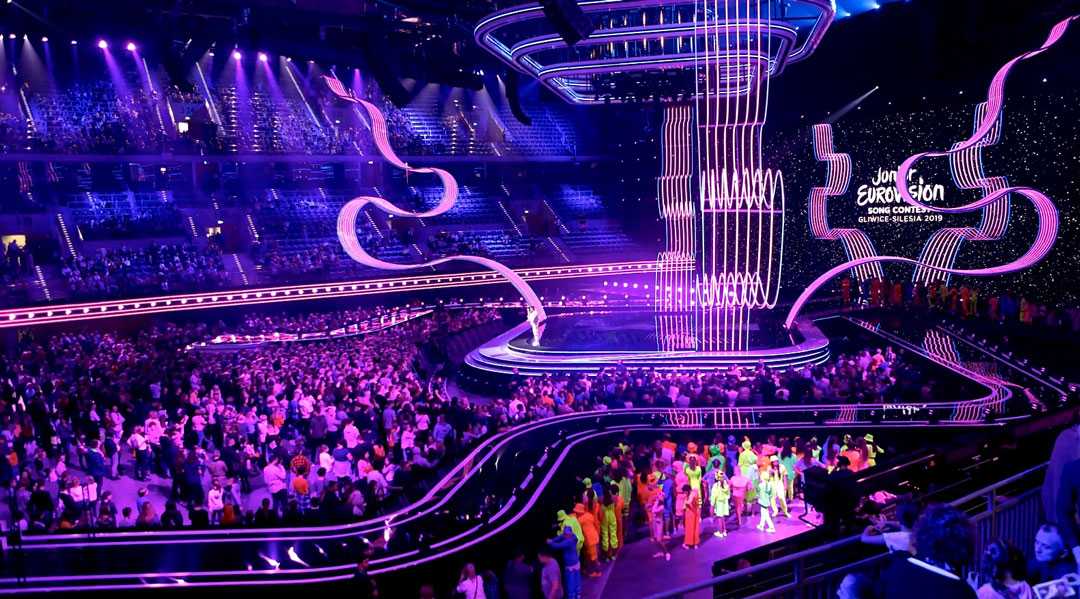Outline PA rig deployed for Junior Eurovision
- Details

Polish TV network TVP S.A. was the show's main organiser, with support from Gigant Sound/Letus (sound), TSE (lighting) and WIZJA (LED screens).
Together, they took on the task of designing the show from scratch, based solely on the guidelines provided by EBU. The entire project, its design and deployment, was a major success for the country's pros, who delivered a top-flight show both to the 8,000-strong audience at the venue and millions of viewers in Europe, Asia and Australia.
Pre-production began in early 2019. Initial scenography and lighting design drafts were produced in April, while the following months were spent on comparing and refining numerous approaches to the end result, as well as finding the best technical solutions - a plethora of concepts was presented during many brainstorming sessions.
Every detail of light positioning, video projection and sound reinforcement had to be approved by EBU representatives, who closely monitored each step of the production. When an agreement regarding the technical aspects was reached, it was time to deploy the scenography, broadcast systems, lighting, PA and multimedia projection systems in the venue. This process took over two weeks and was followed by intensive rehearsals.
The successful hanging of many tons of varied high-end equipment was achieved thanks to good teamwork and cooperation, overseen by Adam Tyszka, TVP's main lighting designer.
The sound installation was divided into several sectors: stage, rehearsal room (also called the IEM Room), Press Room and FOH and MON stations. It consisted of a massive Outline system hung on and around the stage, several interconnected DiGiCo consoles, a sophisticated monitoring system with both wireless and speaker systems, and the Playback Rack, which allowed for secure fail-proof music playback.
To provide sound in the venue, a large Outline audio system was designed. It consisted of 48 C-12 modules, 42 Superfly modules, approximately 60 Mantas boxes (including frontfills) and 20 DBS 18-2 subwoofers. Outline’s Newton 16+8 FPGA processor was also deployed.
Jerzy Taborowski, CEO of Gigant Sound / Letus, comments: “The massive, precisely tuned and configured Outline sound system, coupled with our crew’s experience, enabled us to ensure the whole venue clear precise sound – a fact noted by all personnel on site. I received much praise and many thanks for great audio and an outstanding job by our crew members.”
The event’s sound crew comprised Andrzej Sterna (main FOH engineer), Kuba Mikołajczak (system engineer), Jakub Mikołajczak (system and FOH engineer), Paweł Golinski (main MON stage engineer), Jakub Cimochowski (IEM engineer), Pawel Zakrzewski (Press Room FOH engineer), Patryk Kozak (second system engineer), Marcin Szafrański (on-site technical crew chief) and Marcin Kosmowski (playback rack operator).
(Jim Evans)
















